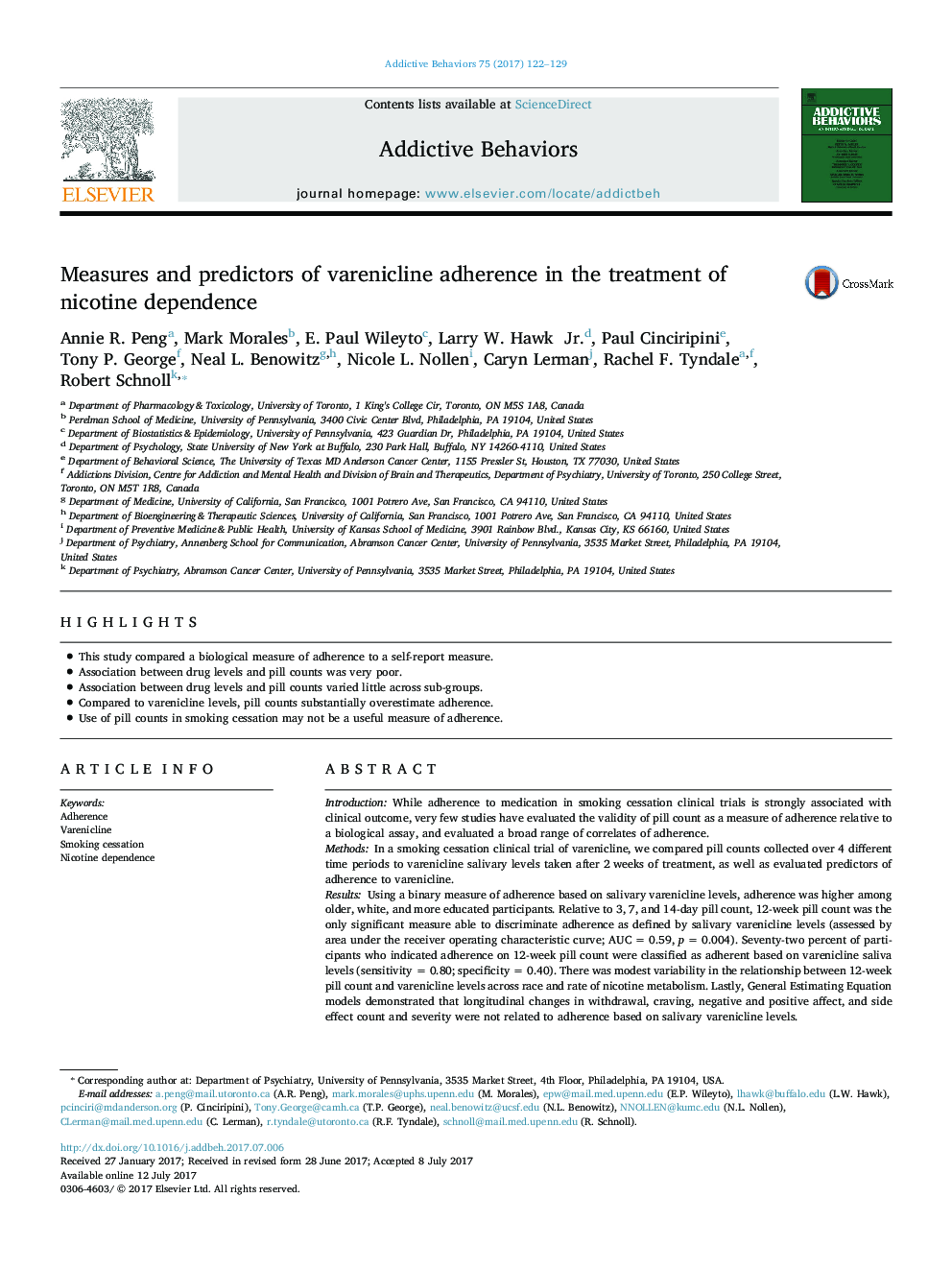| کد مقاله | کد نشریه | سال انتشار | مقاله انگلیسی | نسخه تمام متن |
|---|---|---|---|---|
| 5037674 | 1472496 | 2017 | 8 صفحه PDF | دانلود رایگان |
- This study compared a biological measure of adherence to a self-report measure.
- Association between drug levels and pill counts was very poor.
- Association between drug levels and pill counts varied little across sub-groups.
- Compared to varenicline levels, pill counts substantially overestimate adherence.
- Use of pill counts in smoking cessation may not be a useful measure of adherence.
IntroductionWhile adherence to medication in smoking cessation clinical trials is strongly associated with clinical outcome, very few studies have evaluated the validity of pill count as a measure of adherence relative to a biological assay, and evaluated a broad range of correlates of adherence.MethodsIn a smoking cessation clinical trial of varenicline, we compared pill counts collected over 4 different time periods to varenicline salivary levels taken after 2 weeks of treatment, as well as evaluated predictors of adherence to varenicline.ResultsUsing a binary measure of adherence based on salivary varenicline levels, adherence was higher among older, white, and more educated participants. Relative to 3, 7, and 14-day pill count, 12-week pill count was the only significant measure able to discriminate adherence as defined by salivary varenicline levels (assessed by area under the receiver operating characteristic curve; AUC = 0.59, p = 0.004). Seventy-two percent of participants who indicated adherence on 12-week pill count were classified as adherent based on varenicline saliva levels (sensitivity = 0.80; specificity = 0.40). There was modest variability in the relationship between 12-week pill count and varenicline levels across race and rate of nicotine metabolism. Lastly, General Estimating Equation models demonstrated that longitudinal changes in withdrawal, craving, negative and positive affect, and side effect count and severity were not related to adherence based on salivary varenicline levels.ConclusionsThese results indicate that 12-week pill count was the best, albeit a relatively weak, measure of varenicline adherence; additional factors associated with treatment adherence need to be identified.
Journal: Addictive Behaviors - Volume 75, December 2017, Pages 122-129
